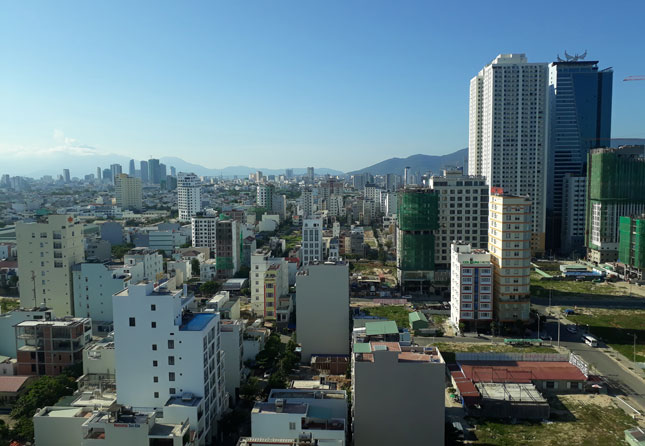Fully tap potential of underground space in urban planning development
Many domestic experts have highlighted the importance of boosting Da Nang’s urban planning development, with a focus on applying the ‘compact city’ model and efficiently using underground space.
 |
| A parking area to the south of the Da Nang Administrative Centre |
The ‘compact city’ or ‘city of short distances’ is an urban planning and design concept, which promotes relatively high residential density with mixed land uses. It is based on an efficient public transport system, and has an urban layout which – according to its advocates – encourages walking and cycling, low energy consumption and reduced pollution.
Over recent years, the city has showed its keen interest in developing many underground projects. These include a tunnel taking Tran Phu under the busy junction with Le Duan, and another one at the intersection of Dien Bien Phu and Nguyen Tri Phuong streets. Also, relevant local agencies are currently seeking a suitable site for the construction of an underground parking area in the near future.
Da Nang now has a population of over one million people and its local urban land area is 98,043 ha. By 2030, the city’s population is expected to reach about 2.5 million people, and as a result, the local demand for urban land use is likely to increase by 37,500 ha.
The focus is being secured the city's position as a major economic and cultural hub of the central region and highlands. In particular, special attention is being to paid to reaching the city's target of becoming a 'megacity' with a population of between 3 and 4 million people by 2050.
 |
| A corner of the city’s urban space |
The Da Nang authorities have already asked the Vietnamese Prime Minister for permission to adjust the local master urban plan towards 2030 with a vision to 2050 which was originally approved in 2013.
Using underground space is one of the most important issues listed in the city’s adjusted master urban plan. Vacant space in the city centre is decreasing, so the exploitation of underground space could bring great benefits for the city.
The former Head of the Ministry of Construction’s Technical Infrastructure Department, Professor Nguyen Hong Tien, underscored a must to fully tap the great potential of underground space in accelerating the urban 3-dimensional space development.
Importance should be attached to using underground space to develop the local aspects of trade, services, transportation and technical infrastructure.
Professor Hong also highlighted the important role of underground space in helping the city effectively solve the existing urban traffic-related problems.
Municipal People’s Committee Vice Chairman Nguyen Ngoc Tuan remarked that Da Nang is a young city. The city authorities, therefore, will continue learning more from other large foreign cities worldwide in developing Da Nang into an 'underground city' in the years ahead. An 'underground city' is a series of linked subterranean spaces that may provide a defensive refuge; a place for living, working or shopping; a transit system; mausolea; wine or storage cellars; cisterns or drainage channels; or several of these.
To date, the Han Market, the 29 March Park, parks to the east of the 2 September Peace Monument, and a metro system on the route of Hung Vuong- Hue T-Junction- Da Nang International Airport and the Han River, have been recognised as important areas planned for the city’s already-adjusted underground space development plans.




